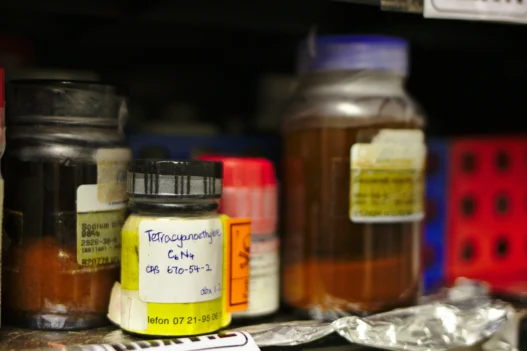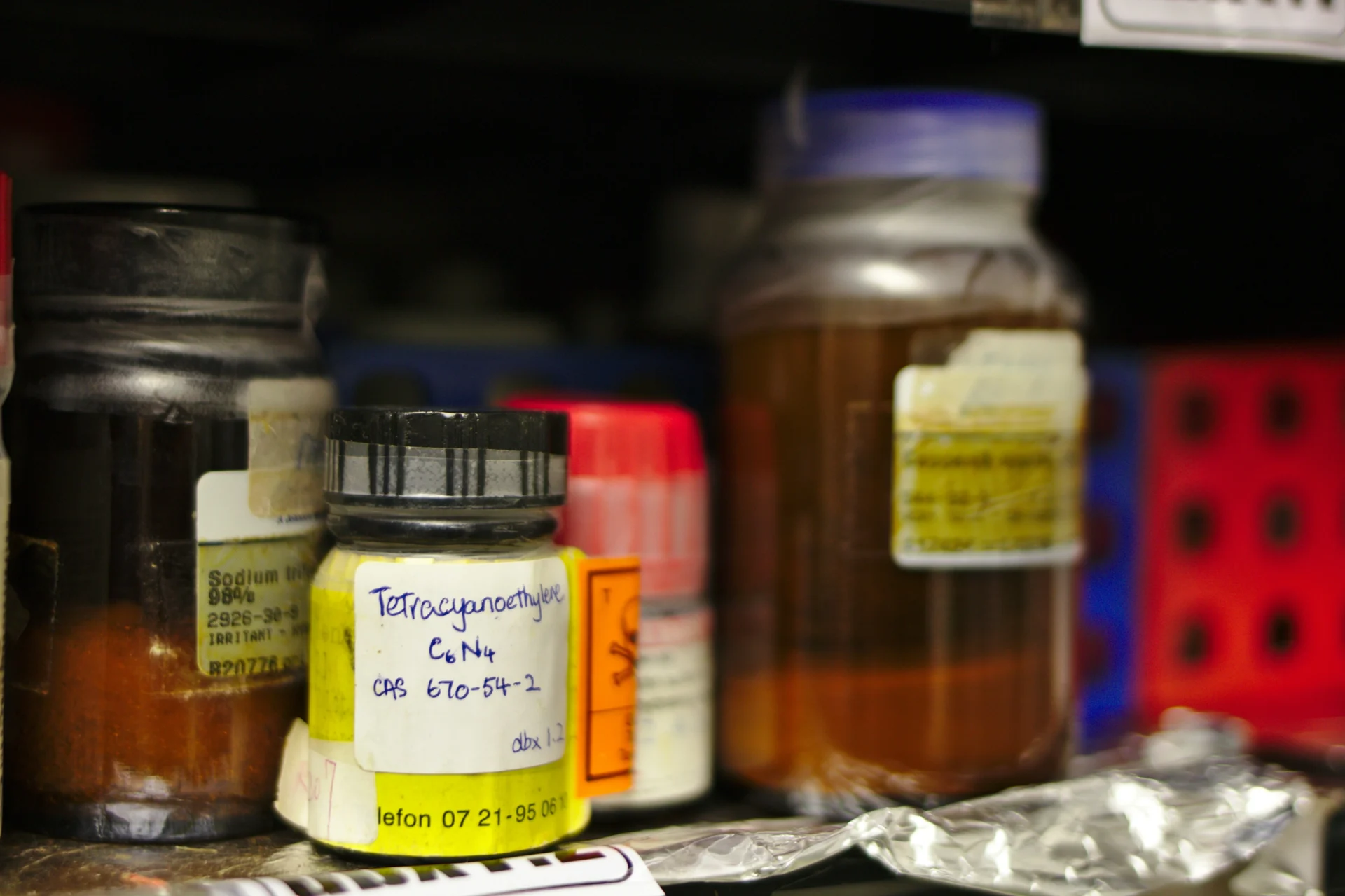Phenylbutyric acid, a chemical compound commonly used in the treatment of urea cycle disorders and certain types of cancer, holds significant relevance to everyday life through its medical applications. Specifically, it plays a crucial role in assisting patients with these conditions in managing their symptoms and improving their quality of life. As such, Phenylbutyric acid serves as a valuable tool in the realm of healthcare, highlighting its importance in addressing serious health challenges that impact individuals on a daily basis.
Table of Contents:
- 💡 Commercial Applications
- ⚗️ Chemical & Physical Properties
- 🏭 Production & Procurement
- ⚠️ Safety Considerations
- 🔬 Potential Research Directions
- 🧪 Related Compounds
💡 Commercial Applications
Phenylbutyric acid, also known as PBA, has various commercial and industrial applications. It is commonly used in the production of plastics, fragrances, and synthetic flavors. Additionally, it serves as a precursor in the manufacturing of various pharmaceuticals and agrochemicals.
In the realm of drug and medication applications, Phenylbutyric acid is primarily utilized in the treatment of urea cycle disorders. These disorders involve the body’s inability to properly remove ammonia, leading to toxic levels in the blood. By using PBA, patients can effectively manage ammonia levels and prevent associated complications.
Phenylbutyric acid’s key role in reducing ammonia levels makes it an essential component in managing hyperammonemia, a condition characterized by elevated ammonia levels in the bloodstream. Clinically, PBA is administered to patients as a part of their treatment regimen to prevent neurological damage and other complications associated with hyperammonemia.
⚗️ Chemical & Physical Properties
Phenylbutyric acid appears as a white crystalline solid with a faint, characteristic odor. It is often described as having a slightly sweet smell.
The molar mass of Phenylbutyric acid is approximately 164.21 g/mol, and its density is around 1.02 g/cm3. Compared to common food items, Phenylbutyric acid has a similar molar mass to glucose and a slightly higher density than water.
Phenylbutyric acid has a melting point around 70-72°C and a boiling point around 265-267°C. In comparison, common food items like sugar have much lower melting and boiling points.
Phenylbutyric acid is slightly soluble in water and has a low viscosity. It is less soluble in water than salt but more soluble than oil, and it has a lower viscosity than honey.
🏭 Production & Procurement
Phenylbutyric acid, also known as PBA, is typically produced through a process called organic synthesis. This involves reacting benzene with butyric acid in the presence of a catalyst to form the desired product. The resulting Phenylbutyric acid is then purified through various methods such as distillation or crystallization to achieve a high level of purity.
In terms of procurement and transportation, Phenylbutyric acid can be sourced from chemical manufacturers or distributors who produce and supply the compound in bulk quantities. It is typically transported in liquid form in drums or containers that are specifically designed to prevent leaks or spills during transit. Due to its corrosive nature, handling and transportation of Phenylbutyric acid must be done with proper safety measures in place to prevent any accidents or exposure to the compound.
Phenylbutyric acid is commonly used in various industries such as pharmaceuticals, agrochemicals, and flavors and fragrances. Procuring Phenylbutyric acid for these applications involves following strict regulations and guidelines set forth by regulatory bodies to ensure the safe handling and usage of the compound. Proper storage conditions and handling procedures must be adhered to in order to maintain the integrity and quality of Phenylbutyric acid throughout the procurement and transportation process.
⚠️ Safety Considerations
Safety considerations for Phenylbutyric acid are of utmost importance due to its potential hazards. When handling this chemical, proper personal protective equipment (PPE) should be worn, including gloves, goggles, and a lab coat. It is essential to work in a well-ventilated area to prevent inhalation of vapors. Additionally, the substance should be stored in a secure location away from incompatible materials to avoid accidental reactions.
Phenylbutyric acid poses several hazards, as indicated by hazard statements. It is harmful if swallowed, inhaled, or absorbed through the skin, and may cause skin and eye irritation. The substance may also cause respiratory irritation and drowsiness or dizziness. In case of contact with the eyes, rinse thoroughly with water for several minutes and seek medical advice.
Precautionary statements should be followed to ensure safe handling of Phenylbutyric acid. It is important to keep the chemical container tightly closed when not in use and store it away from heat and sources of ignition. In case of a spill, absorb the material with an inert absorbent and dispose of it according to local regulations. Avoid releasing the substance into the environment and wash hands thoroughly after handling. It is recommended to use the chemical in a fume hood to minimize exposure to vapors.
🔬 Potential Research Directions
Phenylbutyric acid, a derivative of butyric acid, has been studied for its potential therapeutic applications in various medical conditions. Research has shown that phenylbutyric acid may have anti-inflammatory and anti-cancer properties, making it a promising candidate for further investigation in the field of oncology.
Additionally, phenylbutyric acid has been found to have neuroprotective effects, suggesting its potential use in the treatment of neurodegenerative diseases such as Alzheimer’s and Parkinson’s. Future research could explore the mechanisms by which phenylbutyric acid exerts its neuroprotective effects and identify potential therapeutic targets for drug development.
Moreover, phenylbutyric acid has been studied for its role in epigenetic regulation, particularly in the context of modifying histone acetylation levels. Further research could investigate the potential epigenetic modifications induced by phenylbutyric acid and their implications on gene expression and cellular function. This area of study holds promise for understanding the underlying mechanisms of various diseases and could lead to the development of novel therapeutic strategies.
🧪 Related Compounds
Similar to Phenylbutyric acid, there are several compounds that feature a similar molecular structure due to the presence of a phenyl group attached to a butyric acid backbone. One such compound is Phenylacetic acid, which has a structure similar to Phenylbutyric acid but with a shorter carbon chain. This compound is commonly found in the biosynthesis of various natural products and serves as a precursor for the production of numerous pharmaceuticals and fragrances.
Another compound with a molecular structure akin to Phenylbutyric acid is Phenylpropionic acid. This compound has a similar arrangement of atoms, with the phenyl group attached to a propionic acid backbone rather than a butyric acid backbone. Phenylpropionic acid is utilized in the synthesis of various drugs and fragrances due to its aromatic properties and ability to act as a chiral building block in organic chemistry.
Additionally, Phenylvaleric acid shares a resemblance to Phenylbutyric acid in terms of molecular structure, with the phenyl group attached to a valeric acid backbone. This compound is commonly used in the production of pharmaceuticals and agrochemicals due to its ability to act as a starting material for the synthesis of various organic compounds. Phenylvaleric acid is also found naturally in certain plants and essential oils, contributing to their distinctive aromas.







